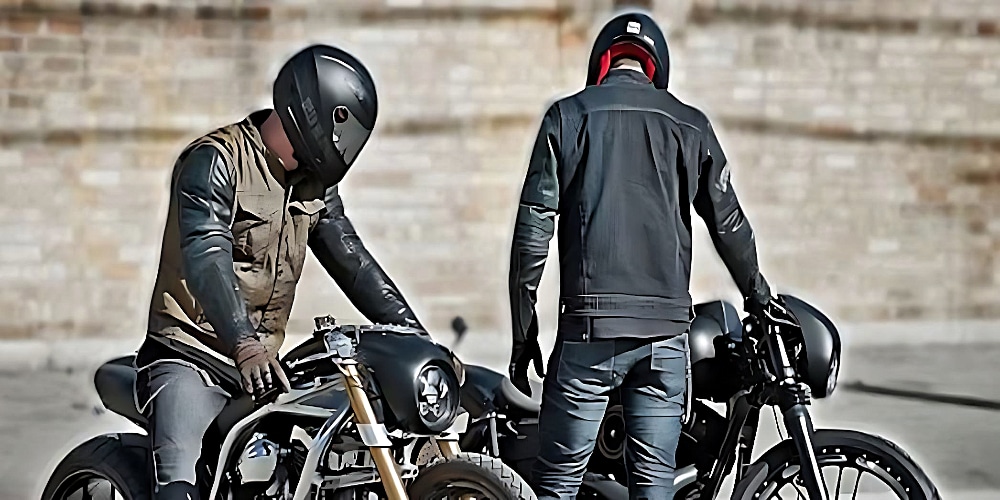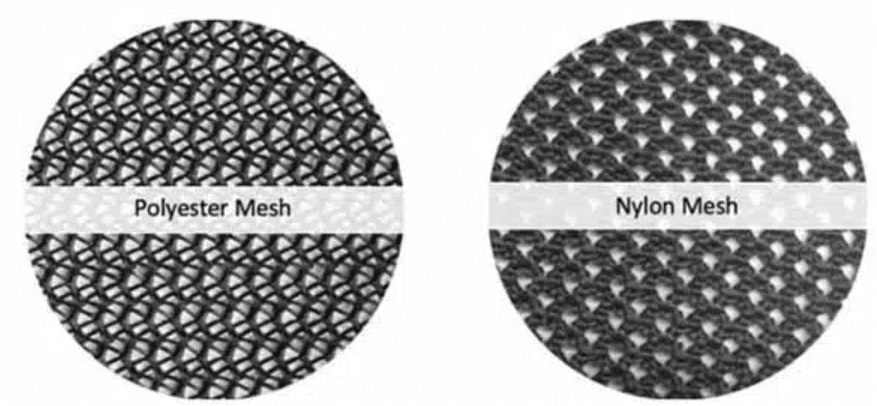For individuals who enjoy riding in cool or cold weather, it’s probably pretty obvious that a jacket is a good idea. But you might be wondering, should you always wear a motorcycle jacket? Yes, you should wear a motorcycle jacket at all times while riding if you want to significantly reduce your risk of injury. Proper motorcycle jackets have high abrasion and tear resistance and can reduce the risk of soft tissue and deep and extensive injuries to the chest, abdomen, pelvis, and back by 43% and 63%, respectively.
You’ll simply be joining most riders who wear protective jackets—59% to be exact—and that can make a huge difference in your safety. And for even better protection, don’t forget to add motorcycle gloves to your outfit, further reducing the risk of upper limb injury by an impressive 95%.
| Jacket Model | Category | Numeric Size | Check & Shop Now |
|---|---|---|---|
| AGVSPORT Ascari | Best Overall | 40-52 | Amazon |
| Klim Dakar | Best Value for Money | 38-62 | RevZilla | MotoSport | Amazon |
| Sedici Federico 2 | Best Budget-Friendly | 38-62 | RevZilla | CycleGear | J&P Cycles |
| Alpinestars T-GP Plus R v3 Air | Best Summer | 38-58 | RevZilla | MotoSport | CycleGear |
| Dainese Fighter | Best Race/Sport | 44-60 | RevZilla | CycleGear |
| AGVSPORT Flex Tex | Best Multi-Season | 40-53 | Amazon |
| REV'IT! Eclipse 2 | Best Warm Weather | 44-60 | RevZilla | CycleGear | J&P Cycles |
| Scorpion EXO Optima | Best Winter | 36-62 | RevZilla | CycleGear | Amazon |
| Klim Induction | Best Adventure | 38-58 | RevZilla | MotoSport | Amazon |
| Alpinestars Andes v3 Drystar | Best Street | 38-62 | RevZilla | MotoSport | Amazon |
| AGVSPORT Palomar | Best Vintage | 40-52 | Amazon |
Learn Even More Benefits of Choosing to Wear a Motorcycle Jacket

But the benefits of wearing a motorcycle jacket go beyond just injury prevention. It shields your skin from wind, which can lead to dehydration, especially in hot weather. A proper jacket also protects you from unpleasant elements like hail, rain, and sunburn, reducing the risk of skin cancer from prolonged exposure.
What’s more, it can keep you cool on hot days and warm on cooler days, while also providing storage pockets for your belongings. Most motorcycle jackets also come with reflective inserts that can enhance your visibility. Remember, 75% of all bike crashes occur at speeds of 35 mph (50 kph) or slower.
As you can see, wearing a motorcycle jacket is really a no-brainer. But how do you go about choosing the right one?
Materials Used in the Construction of Motorcycle Jackets
The choice of material and construction method can impact not only the feel of your jacket but also their overall quality and lifespan. Let’s delve deeper into this aspect below:
Leather
Leather jackets are a go-to choice for many motorcyclists, thanks to their timeless style and exceptional durability. But it’s crucial to choose a jacket that provides adequate protection, with a thickness of 1.2-1.4mm being the sweet spot. While leather jackets offer unbeatable protection, they may not be the best option for hot and humid conditions or extreme weather changes.
Types of Leather
Not all leathers are created equal. Let’s take a look at the most commonly used types of leather in motorcycle jackets, each with their distinct features:
- Cowhide: The most popular type of leather used in motorcycle jackets
- Kangaroo: Slimmer and lighter than cowhide, with exceptional abrasion resistance
- Goatskin: Extremely durable, soft, and tactile, with lanolin for suppleness
Grades of Leather
Of course, quality leather depends not only on the source animal but also on how it’s handled during production. Let’s focus on the most popular grades.
- Full-Grain Leather: The strongest and most breathable leather, with increased resilience and lifespan, but may contain flaws and develop a natural patina over time
- Top-Grain Leather: Thinner, less resilient, and less breathable than full-grain leather, with a uniform appearance and feel due to sanding and treatment to remove defects
- Split Leather: The cheapest alternative, made from the fibrous section of the skin, not suitable for motorcycle gear as it is nearly worthless for falls.
Attention: Leather jackets are windproof but not waterproof. For rain protection, sealed seams and a waterproof liner like Gore-Tex are necessary. With adequate care, leather can last for more 20 years. Check out the best leather conditioners for motorcycle jackets.
Textile
Motorcycle jackets are also made from a range of textiles. Each type of fabric has its unique properties that enhance the jacket’s functionality, durability, and safety. Here is a brief overview of the most common fabrics used to make motorcycle jackets:
- Nylon: Flexible material with high abrasion resistance and can hold out against high temperatures. It lacks dimensional stability and is not completely waterproof until covered with Gore-Tex or Aero-Tex.
- Polyester: Stain-resistant, retains its shape, but doesn’t absorb dyes, doesn’t feel as soft as cotton, and is highly shrinkable.
- Spandex: Light and comfortable to wear, perspiration resistant, has high elasticity, but can stick to your body and is heat sensitive.
P.S: For your textile jacket to last you for 5 to 10 years, it’s important to take good care of it, just like you would with a leather jacket. To help you maintain your jacket’s longevity, we’ve prepared a simple step-by-step guide on how to clean it properly with a washing machine without causing any damage:
- Remove detachable linings and armor.
- At 40℃, wash with a specialist fabric cleaner such as Stardrops – The Pink Stuff – The Miracle All Purpose Cleaning Paste.
- Tumble dry on warm or line dry and then tumble dry for 20 minutes to reactivate water-repellent coating.
- If unable to tumble dry, use a warm iron with a towel in between.
- Test water-repellency by spraying water on the outer surface. If it soaks in, renew the coating with a reproofing spray like the Nikwax TX.Direct Spray-On Waterproofing.
Cotton
Cotton is comfortable and adaptable, hypoallergenic, but doesn’t dry rapidly, wrinkles, and shrinks. Common cotton fabrics used for motorcycle jackets include denim, oxford, and waxed cotton. Waxed cotton is tough and weather-resistant but doesn’t breathe well and requires annual re-waxing. Denim is sturdy and absorbs sweat but has low elasticity and is difficult to wash and dry.
The Best Protective Motorcycle Jacket Fabrics

Top protective riding gear companies, like AGVSPORT, use a variety of fabrics to create their jackets, giving them an iconic look while offering military-grade protection against abrasion and tears. The best approach to enhancing the strength of textiles and other fabrics, such as cotton, is to blend them with high-tenacity synthetic fibers. Here are some of the best protective motorcycle jacket fabrics:
- Cordura: Originally designed for tactical military gear, Cordura is a nylon 6,6 fiber produced by Invista, Inc. It can be blended with other natural fibers and is cost-effective and lightweight, offering excellent durability and abrasion resistance. Cordura is 100% waterproof and comes in grades ranging from 500D to 1000D.
- Kevlar: Known for its molecular-level strength, Kevlar is an aramid fiber that is five times stronger than steel on a weight-for-weight basis. It is widely used to protect against impact and penetration.
- Dyneema: The world’s strongest fiber, with a tensile strength 15 times that of steel. This ultra-high molecular weight polyethylene fiber is flexible enough to be woven into various fabrics and excels in cut and abrasion resistance. It is also lightweight, breathable, and doesn’t absorb moisture like Kevlar.
- Keprotec: Composed of 86% Cordura, 8% Kevlar, and 6% polyurethane, Keprotec is an extremely protective material developed by Schoeller for motorcycle racing. It is abrasion-, tear-, wind-, and temperature-resistant, as well as waterproof, breathable, and comfortable to wear.
- Mesh: A lightweight and porous synthetic fiber that comes in various variations such as polyester and nylon mesh. While less protective than aramid-reinforced jackets, mesh-reinforced jackets provide ventilation and flexibility while keeping you dry. Some mesh motorcycle textile jackets provide almost the same level of protection as leather jackets.
- Gore-Tex: Enhances waterproof, windproof, and breathable properties in gloves.
- Aero-Tex: Breathable, waterproof fabric used in motorcycle jackets to provide both protection and comfort to the rider.
Understanding Safety Ratings for Motorcycle Jackets
Motorcycle jackets come with various safety ratings that you should understand when purchasing a jacket. Look for the CE rating to determine whether the jacket was tested in certified facilities and meets required standards. Also, consider the impact zone protection, elbow and shoulder armor, back protectors, and abrasion resistance of the jacket.
CE-certified and CE-approved are two ratings to consider. CE-certified means that samples of the jacket were tested in certified facilities, while CE-approved means that many parts of the jacket were tested in facilities and meet or exceed the required standards. Although CE-approved is the gold standard, CE-certified is sufficient.
Finding the Right Fit for Your Motorcycle Jacket

It’s essential to find a jacket that fits you well. You want it to be snug, but not so tight that it suffocates you, and it should allow for natural movement and flexibility through your chest. If you’re buying a leather jacket, keep in mind that it will fit even tighter as it forms around your body over time.
Make sure it sits along your belt line when you’re standing up, and on your thighs when you’re in a riding position. The sleeve length should come to your wrist when you’re on the bike, and about the middle of your palm when you’re standing. To get your waist and arm measurements, use a soft tape measure and refer to the size chart provided by the website or shop you’re buying from. Wearing a jacket that’s too loose can compromise your safety.
Euro USA Alpha Chest (cm) Waist (cm) Arm (cm) Height (cm)
48 38 SM-MD 94-98 80-84 57-58 172-175
50 40 MD-LG 98-102 84-88 59-60 176-179
52 42 LG 102-106 88-92 61-62 180-183
54 44 LG-XL 106-110 92-96 63-64 184-187
56 46 XL-2XL 110-114 96-100 65-66 188-191
58 48 2XL 114-118 100-104 67-68 192-195
60 50 3XL 118-122 104-108 67-68 192-195
Note: The sizing information provided is by the manufacturer and may not ensure an ideal fit.
I've diligently categorized my motorcycle gear recommendations into all available categories, with the aim of providing you with a comprehensive analysis that showcases the absolute best options for all your needs. These items are the culmination of in-depth research, extensive testing, and personal use throughout my vast experience of 50+ years in the world of motorcycling. Besides being a passionate rider, I've held leadership positions and offered consultancy services to reputable companies in over 25 countries. To See Top Picks and the Best Prices & Places to Buy: Click Here!

Information for this article was partially sourced and researched from the following authoritative government, educational, corporate, and nonprofit organizations:
- Australian National University
- The George Institute for Global Health
- National Institutes of Health
- New South Wales Government
MS/A













